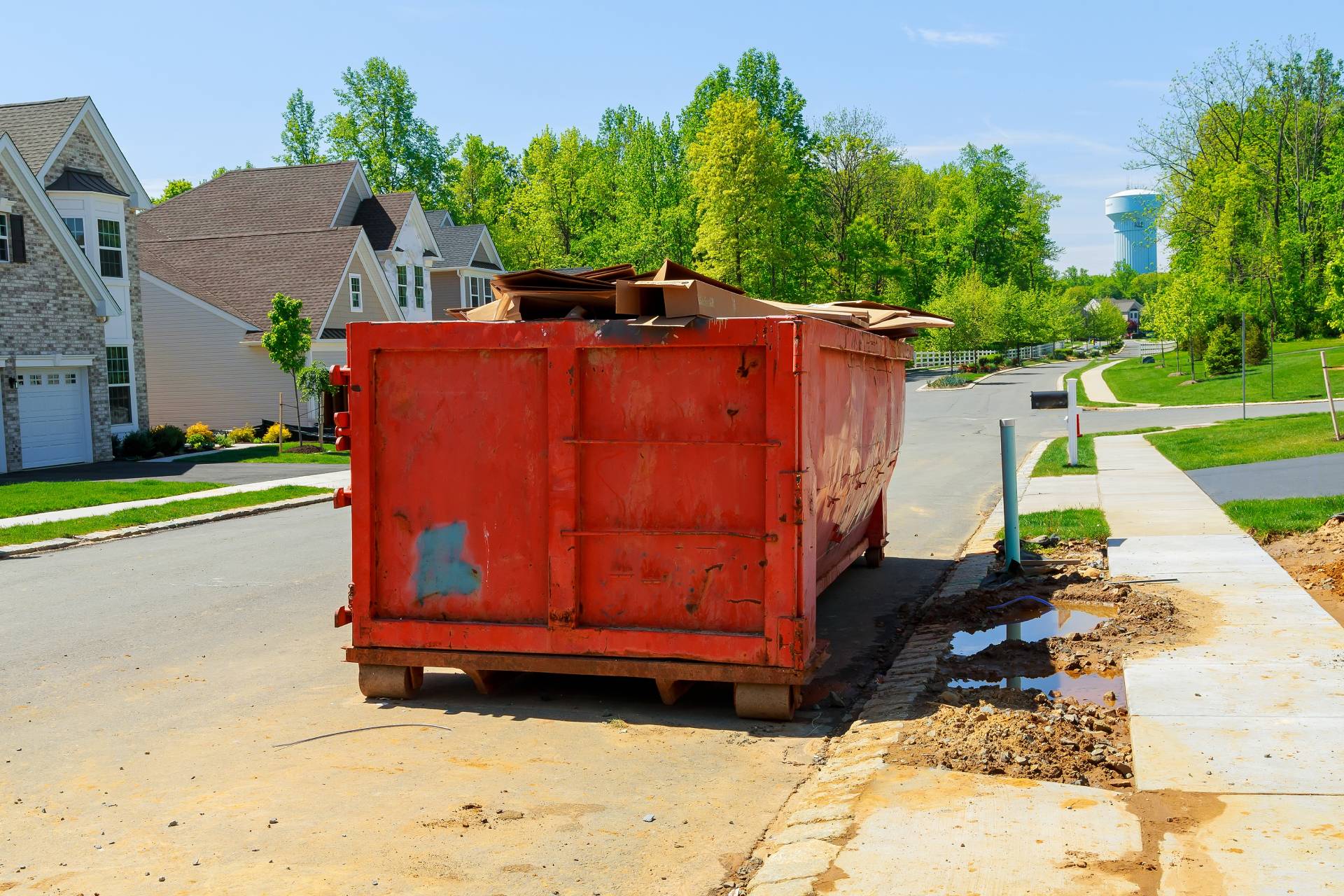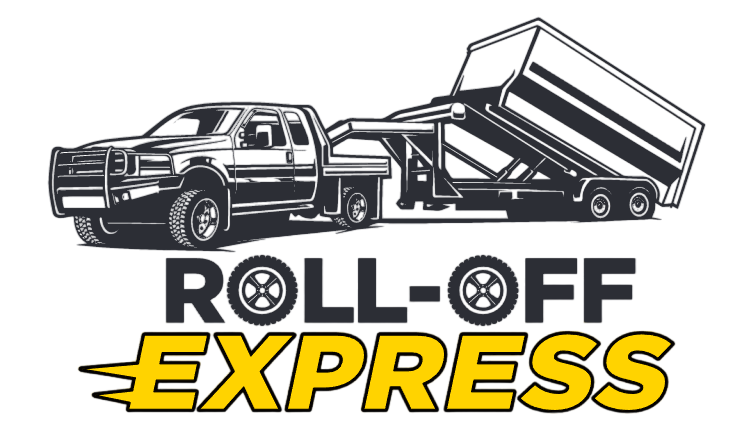
Dumpster rental can be a lot of fun and an excellent way to save money. But when you’re about to throw something away, it’s worth asking yourself if it’s worth the hassle of loading it into your car and driving to a nearby dumpster or recycling center. If not, read on! We’ll go over everything you need to know about what goes into a dumpster—and what doesn’t.
Furniture
Furniture is one of the most common items in a dumpster. Whether it’s wood, metal, or plastic furniture, if it can be broken down into smaller pieces and does not exceed the dumpster’s maximum weight capacity (typically around 15 tons), it is likely to be considered acceptable for recycling. Many people who rent dumpsters do so simply to get rid of old furniture that they no longer have space for at home or that needs to be replaced.
Determine whether your furniture can be recycled by measuring its width and depth with measurements taken from outside surfaces only (don’t include any parts that go inside the piece). If it’s small enough to fit through your doorways, it’s safe to throw into a dumpster–though some large pieces may still require special handling due to their size or weight!
Appliances
In general, most appliances can go into dumpsters. This includes refrigerators, stoves, dishwashers, microwaves, and other appliances. Check with your local waste management company for specific rules before you throw something away.
Carpeting and flooring
Generally, carpeting and flooring are considered to be a bulky waste. This means that your municipality may not collect them separately from regular garbage. However, it’s important to note that these items can still be recycled or donated—even if they can’t be thrown away.
Electronics
If you’re throwing away technology and electronics, make sure they are broken (or otherwise useless) before tossing them in the dumpster. While most people would leave their old cell phones out on the curb instead of throwing them into a dumpster, many charities will gratefully accept usable devices for recycling. Several companies work with electronics recyclers to responsibly dispose of them when possible.
Construction materials and debris
Construction debris, construction waste, and construction trash aren’t the same things. But they can all be thrown into a dumpster.
Construction debris is what you might find at a construction site—like bricks, concrete chunks, and other large pieces of material that are too large to fit through a disposal chute or down a garbage chute. Construction waste includes wood scraps and shingles (which we’ll get to in just a moment). Construction trash includes smaller items used on the job site—paint cans, old tools, and hand tools.
Plumbing fixtures
Plumbing fixtures can be thrown into the dumpster. Fixtures must be disconnected from the water supply, removed from the home, and free of hazardous materials, such as chemicals that could harm your workers or contaminate the soil.
Yard waste
Yard waste is the best kind of “trash” in the world because it can be turned into free mulch! Try composting if you want to save money on landscaping and gardening supplies. Composting turns organic material into a soil amendment that can be added back to your yard or garden as fertilizer. Composting also helps reduce landfill waste by recycling food scraps and yard waste like leaves, grass clippings, and other plant matter.
When composted properly, compost will become dark brown or black in color and have an earthy smell rather than smell like rotting food (which would indicate that you need to add more nitrogen). The best way to turn your trash into treasure is by shredding down more significant pieces of yard waste before placing them in your bin, along with other materials like tea bags or coffee grounds for extra nitrogen content.
What Can’t You Put In A Dumpster?
Hazardous materials typically cannot be disposed of in a dumpster. This entails, to name a few things, wet paints, asbestos, e-waste (electronic trash), oil, some equipment, and tires. Learn more by reading on.
Stains, Paint, AND Lacquers
You cannot discard lacquers, varnishes, or other paints; latex paints are the exception. Allow latex paint to harden before disposing of it if you can’t recycle it. One method is pouring it into a box of cat litter or shredded paper. Once it has dried and become solid, you can throw it away in the trash.
Tires
Tires cannot be dumped in the trash because most American landfills do not take them. There are various ways to get rid of old tires; for instance, some dealerships or auto parts retailers will take them. Additionally, some recyclers turn tires into asphalt or rubber mulch.
A Dangerous Waste
Things like asbestos, motor oil, household cleaners, pesticides, propane tanks, polluted soil, ink or resins, or medical waste shouldn’t ever be disposed of in a dumpster. There may be a designated time or location in your town where you can properly dispose of hazardous garbage.
A household hazardous water recycling kit can be a possibility in your area. Your home receives the kit, which you can use to safely package your hazardous waste and mail it for proper disposal.
Batteries
Dry-cell and automobile batteries cannot be thrown away because of the chemicals they contain, which could cause them to leak and harm the environment.
Your used batteries will be recycled at any shop that sells automobile batteries. Some establishments feature recycling boxes specifically for dry-cell batteries, including regular household AA or AAA batteries.
What Should You Do With Dumpster-Prohibited Items?
- Appliances and other electronic devices can be given to worthy causes like Habitat for Humanity or Goodwill.
- Find a donation station to recycle your old cell phones, laptops, printers, tablets, etc. Several locations recycle electronic waste.
- Engine oil should be disposed away properly at a location that provides recycling.
- Old car batteries are frequently accepted by auto parts retailers, mechanics, and dealers; many even give a deposit if you return the battery to the store where you originally purchased it.
- Bring your used tires to a tire store so they can be recycled.
Where to Get A Dumpster in Springfield, MO?
If you need a dumpster, finding one can be a real hassle. You could drive around for hours, looking for dumpsters for rent. Which can be more of a hassle than it’s worth.
The solution is simple. Working with Roll Off Express LLC saves you time, fuel, and frustration. We have dumpsters available in Springfield, MO, and surrounding areas. Call us today at (417) 838-4398, and we’ll deliver a clean, affordable dumpster to your home or work site once you need it, without you needing to hunt one down first.
How Does It Work?
1 – Choose the size of the roll-off container you want to rent from our website (the largest we offer is 20 yards).
2 – Decide how long you need the container and tell us this in the special instructions area on our order form (the cost will depend on the container’s size and rental length).
3 – We’ll deliver your container when you need it.

I don’t think the title of your article matches the content lol. Just kidding, mainly because I had some doubts after reading the article.
Your point of view caught my eye and was very interesting. Thanks. I have a question for you.
Thank you for your sharing. I am worried that I lack creative ideas. It is your article that makes me full of hope. Thank you. But, I have a question, can you help me?
I enjoyed the humor in this piece! For more, visit: FIND OUT MORE. Let’s chat about it!
hello there and thank you for your info – I have certainly picked up anything new from
right here. I did however expertise some technical points using this website, since
I experienced to reload the website many times previous to I could get it to load
correctly. I had been wondering if your web hosting is
OK? Not that I’m complaining, but sluggish loading instances times
will sometimes affect your placement in google and could damage your
high quality score if advertising and marketing with Adwords.
Anyway I’m adding this RSS to my email and can look
out for much more of your respective fascinating content.
Ensure that you update this again soon.. Najlepsze escape roomy
This design is wicked! You obviously know how to keep a reader amused.
Between your wit and your videos, I was almost moved to start my own blog
(well, almost…HaHa!) Wonderful job. I really enjoyed what you had to
say, and more than that, how you presented it. Too cool!
Thanks for sharing. I read many of your blog posts, cool, your blog is very good.
I need to to thank you for this excellent read!! I absolutely loved every little bit of it. I’ve got you bookmarked to look at new stuff you post…
You’re so awesome! I do not believe I’ve truly read through anything like this before. So nice to discover somebody with genuine thoughts on this subject matter. Seriously.. thanks for starting this up. This website is something that is needed on the internet, someone with a little originality.
After going over a few of the articles on your website, I really appreciate your technique of blogging. I saved as a favorite it to my bookmark site list and will be checking back soon. Please check out my website as well and let me know how you feel.
Very good post. I will be facing some of these issues as well..
I blog frequently and I genuinely appreciate your information. This great article has really peaked my interest. I am going to book mark your website and keep checking for new details about once per week. I opted in for your RSS feed too.
I really like reading a post that will make men and women think. Also, thanks for permitting me to comment.
When I originally commented I appear to have clicked on the -Notify me when new comments are added- checkbox and now each time a comment is added I receive four emails with the exact same comment. Perhaps there is a way you are able to remove me from that service? Thanks a lot.
I needed to thank you for this fantastic read!! I definitely enjoyed every little bit of it. I have you book marked to check out new stuff you post…
I need to to thank you for this very good read!! I definitely loved every bit of it. I have you bookmarked to check out new things you post…
I enjoy reading a post that can make people think. Also, many thanks for permitting me to comment.
Good info. Lucky me I came across your blog by chance (stumbleupon). I have book-marked it for later.
Everything is very open with a precise clarification of the issues. It was truly informative. Your website is extremely helpful. Many thanks for sharing!
After checking out a handful of the articles on your web site, I really appreciate your way of blogging. I bookmarked it to my bookmark webpage list and will be checking back in the near future. Please visit my website as well and let me know what you think.
Greetings! Very helpful advice in this particular post! It’s the little changes that will make the most important changes. Thanks for sharing!
It’s difficult to find well-informed people on this subject, but you sound like you know what you’re talking about! Thanks